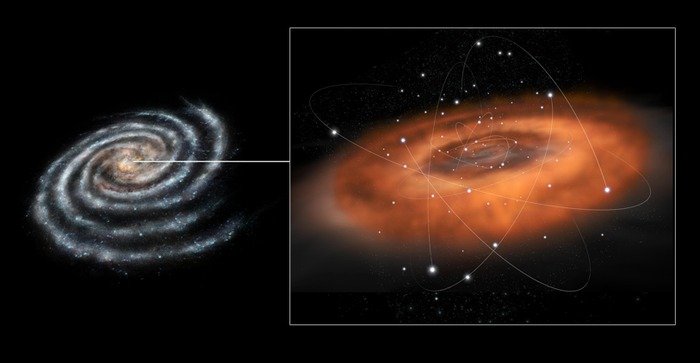This artist's concept illustrates the frenzied activity at the core of our Milky Way galaxy. A dense torus of gas and dust surrounds the galactic center. Part of this gas is being heated by the strong ultraviolet radiation from massive stars that closely orbit the central black hole. Heating also likely results from strong shocks, generated in collisions between gas clouds, or in material flowing at high speeds. Credit: NASA/JPL
PASADENA, Calif., May 8 (UPI) -- A space telescope has observed surprisingly hot gas falling towards the supermassive black hole at the center of our Milky Way galaxy, U.S. researchers say.
"The black hole appears to be devouring the gas," said Paul Goldsmith, the U.S. project scientist for the Herschel space observatory at NASA's Jet Propulsion Laboratory, Pasadena, Calif. "This will teach us about how supermassive black holes grow."
Herschel is a European Space Agency mission with important NASA participation.
Our galaxy's black hole has a mass about 4 million times that of our sun and lies roughly 26,000 light-years away from our solar system.
That's still hundreds times closer to us than any other galaxy with an active black hole at its center, making it the ideal natural laboratory to study these enigmatic objects, JPL scientists said.
The biggest surprise in the Herschel finding was the temperature of gas in the innermost central region of our galaxy. At least some of it is 1,832 degrees Fahrenheit, much hotter than typical interstellar clouds, which are usually only a few tens of degrees above absolute zero, or minus 460 degrees Fahrenheit.
A significant contributor to the high temperatures may be strong shocks in highly magnetized gas in the region of the black hole, the scientists said.
Such shocks can be generated in collisions between gas clouds, or in material flowing at high speeds toward the black hole, they said.















